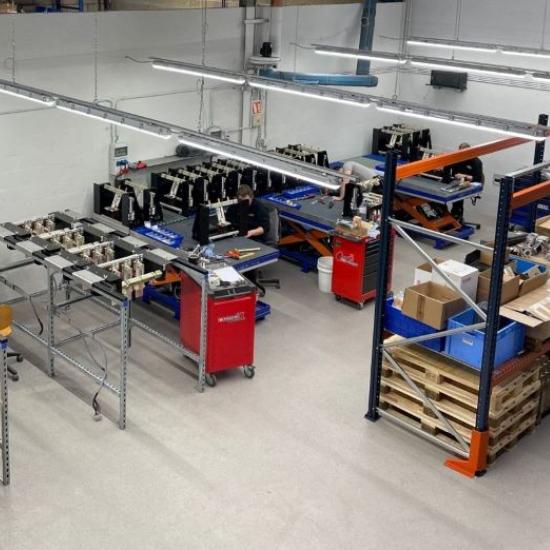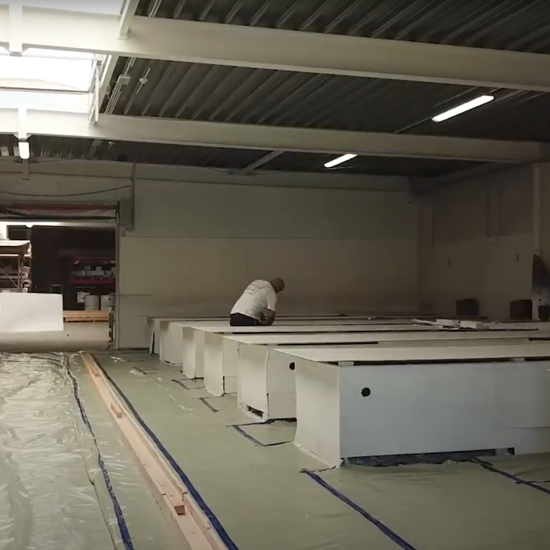Houtbuigerij Desmet specialises in developing and manufacturing sustainable products from bent solid wood, plywood and felt. These products are custom-made and co-engineered with customers from all over the world. The quality products with the most complex and varied shapes are used in design furniture, cinemas, theatres, office and school interiors, etc. A large part of the production consists of smaller series of new objects that have never been made before. This family-run SME has two branches: one in the West-Flemish town of Menen and, since 2003, a second facility Romania. Thanks to the close cooperation and good contacts between the two sites, the company has been able to combine the strengths of the two locations.
Smaller, complex series
One problem, however, was that the existing layout in Belgium, which was built around the needs of large uniform series, was not well suited for the new production process, which was designed to facilitate smaller series with large variations. In an earlier phase, unnecessary intermediate stocks between production steps had been eliminated. By rearranging the layout of the company and reducing inventories, the company also succeeded in regrouping its activities into a smaller area. These changes freed up space for starting a new activity, namely the preparation of felt for furniture and interior elements.
Felt as a QRM pilot project
As its next step in the QRM process, Houtbuigerij Desmet aims to reorganise around specific market segments instead of according to department. This makes it possible to expand production cells, where the workstations are located close to each other and the work is performed as a team. This enables direct communication and self-management. The new range of felt products proved to be an ideal place to start. The hall was set up as a production cell with a logical flow, in which five operators are active.
To keep the lead times in the cell short, a great deal of attention was paid to cross-training employees. This reduces the interdependencies and creates the flexibility needed for responding quickly to fluctuations in demand. In addition, it was decided to carry out one process in-house that had been outsourced, and this resulted in time savings.
These actions made it much easier to plan the felt cell. Whereas previously people had to draw up a plan for each step, the felt cell now simply gets a list of the orders to be produced. It is then the felt cell workers themselves who direct the flow. Thanks to this production cell-arrangement and the corresponding adjustments to the flow, a lead time of 12 weeks could be reduced to five days.



